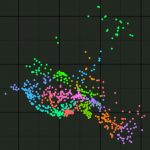[Part 8 of 12: 1) The science of the artificial 2) function, behaviour structure 3) form follows function, 4) no function in structure, 5) the medium is the message 6) types and schemas 7) aesthetics: attractive things work better 8) managing (great) expectations 9) colour 10) styles and standards 11) design solution spaces 12) conclusions]
Managing expectations is the key to success in most areas of life, not just design.
When a design artefact is judged to be useless, it is often because it does not behave in the way the user is expecting. This is because there is a gap between what the designer intended and what the user is expecting, which in user interface design, Donald Norman calls the gulf of execution. Straddling this gulf, is the way to manage user expectations.
Modelling
We all have models of how the world works (mental models), and of ourselves (self schemas) to explain and make sense of everything. In design, we have three models:
- The designer’s model of how the artefact works.
- The user’s model of how the artefact should work and how it actually works which changes with experience.
- The artefact’s image of how it works which is the way it looks which should be supported by the documentation or user manual.
These models should line up in order to match user expectations, but to do so, the designer has to provide the correct cues.
Cues
Affordance
First proposed by psychologist James Gibson, affordance describes how the physical properties of an artefact will influence its function. So, round wheels are much more suitable than square wheels on your bicycle. It is easy to see that the round wheels go round, square wheels might make you think the bicycle is an uncomfortable seat.
Consistency
When similar looking parts of an artefact or system work in a similar way then users can easily transfer what they have learnt from one part to another and have similar experiences. Consistency can be aesthetic, for example, the windows on a graphical user interface windows have the same layout, or the logo is the same on each restaurant chain outlet so the customer know what to expect. Consistency can also be functional such as how traffic lights work in a certain expected order: red, amber, flashing amber, green.
Constraints
Constraints are used to indicate what actions are possible. These can be physical such as when barriers are put up at sporting events to direct crowds and traffic. They may also be psychological in symbols such as a skull and cross bones for poison or danger, or conventional which we learn, such as we stop when the traffic lights are red. Or, they can be cultural such as what people wear during mourning, in some countries it is black, in others it is white.
Feedback
Feedback is necessary to guide user behaviour. A dialog box can ask: Is this what you want to do? Less usefully it might say: No, you can’t do that. The box really needs to add: but you can do this or this.
Mapping
We all need a link between what we do and what happens, so if you are driving your car and turn the steering wheel left you expect it to turn left.
Tradeoffs
In previous posts, we saw that the asethetically pleasing lemon squeezer known as Juicy Salif had sacrificed some of it functionality in order to look good, as did the Lockheed Lounger. In the same way, the more function you add to an artefact, particularly in the cues which are needed to guide and manage user expectations, the less usable it becomes. Complex gadgets may look cool but if they are not functional their value is more asthetic than usable and will only satisfy a tiny section of determined users.







7 comments